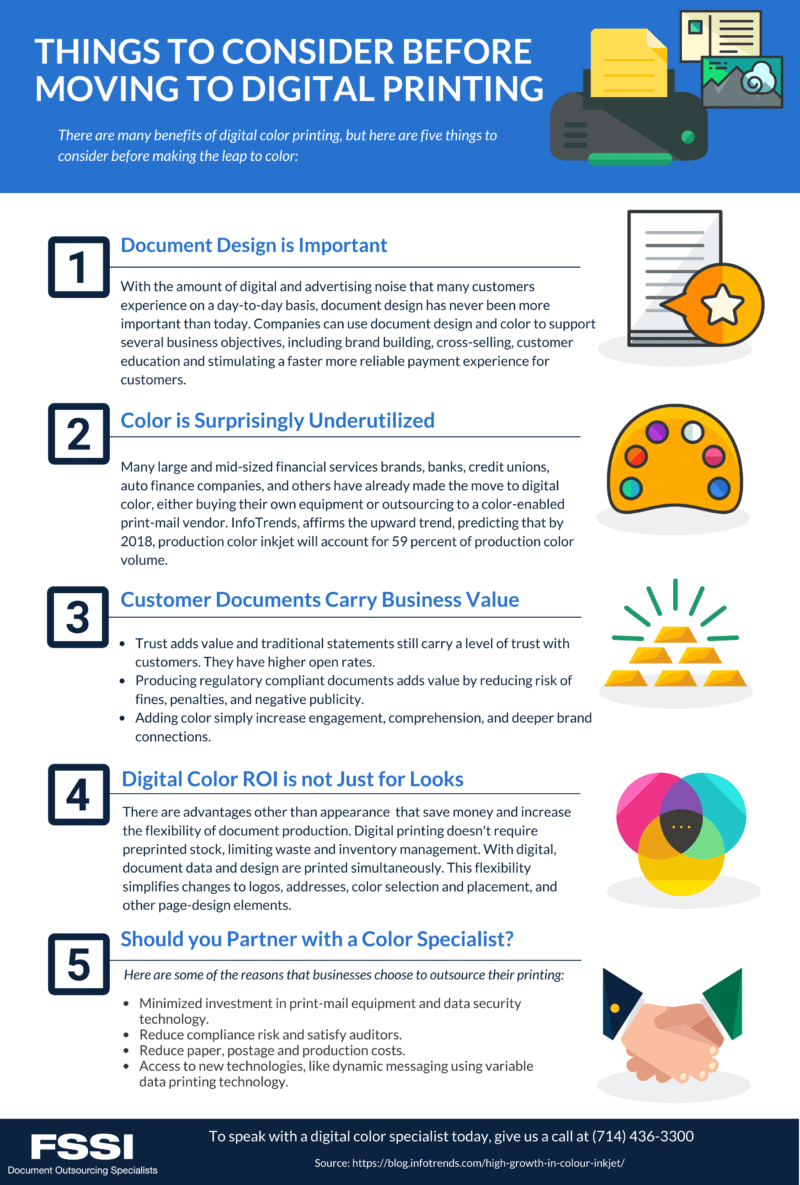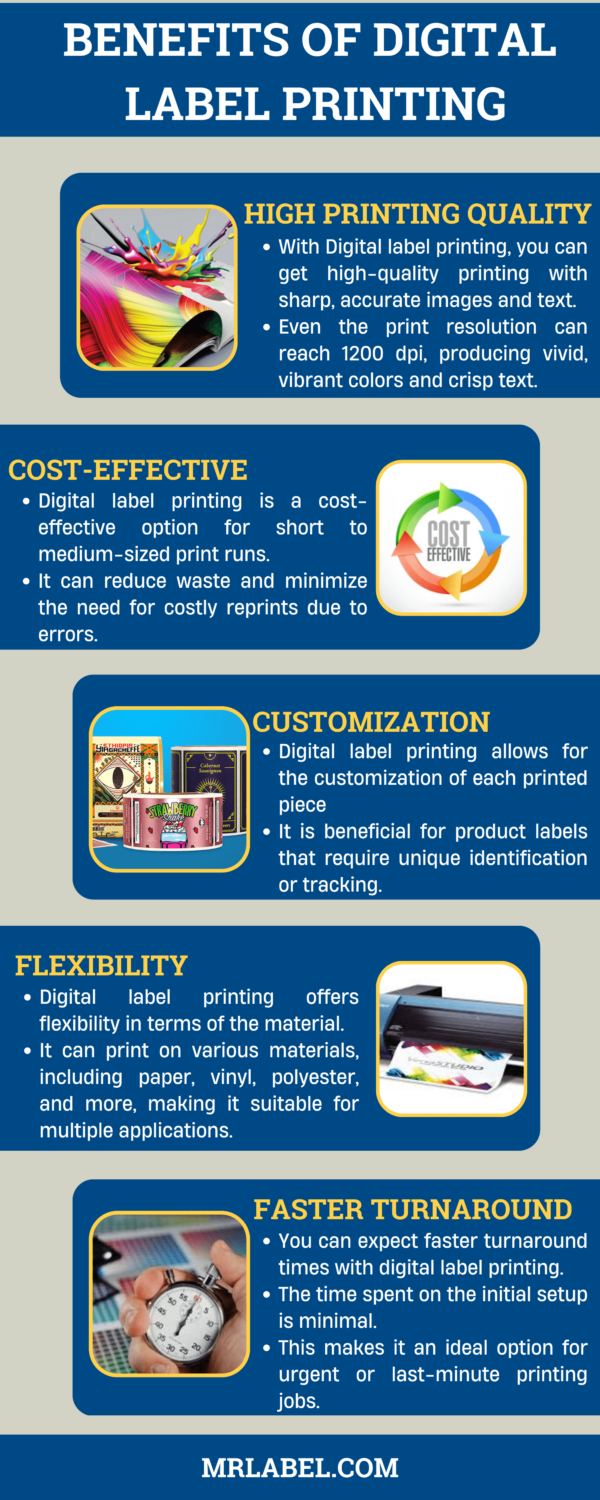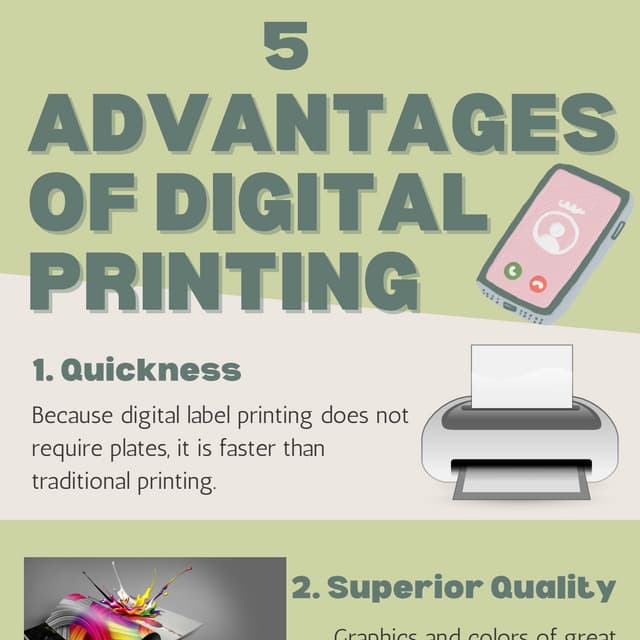Digital Printing Fundamentals Explained
Digital Printing Fundamentals Explained
Blog Article
Rumored Buzz on Digital Printing
Table of ContentsDigital Printing - The FactsAll About Digital PrintingNot known Incorrect Statements About Digital Printing All About Digital PrintingDigital Printing - TruthsThe Buzz on Digital Printing
Variable data printing, such as direct mail with personalized codes and addresses, is preferably matched for electronic printing. Digital fast printing only needs four actions of layout, testimonial, printing and binding to obtain whatever done. Digital quick printing has an unequaled benefit: print on demand.According to PMMI, electronic printing enables brands and manufacturers to react rapidly to customer needs while enhancing the supply chain, decreasing warehousing cost and waste, and enjoying faster time to market. That all noises excellent, however how does this modern technology do all that? The significant differentiator of these technologies is that there are no set up charges and no plates with digital printing.
Our Digital Printing Statements
According to Wikipedia, the biggest difference in between digital printing and traditional approaches such as lithography, flexography, gravure, or letterpress - Digital Printing is that there is no requirement to replace printing plates in electronic printing, whereas in these analog printing techniques the plates are consistently replaced. This causes quicker turnaround time and decreases price when utilizing electronic printing.
Fast production suggests getting your product to market quicker. It likewise suggests it's less complicated and faster to make changes later, when you transform a recipe, add a SKU, or create seasonal packaging. Digital printing is extremely versatile, so it's simple to make adjustments to the plan design quickly. It all goes back to the plates.
With standard printing approaches, short-run printing is simply not possible. Since a great design can make or break your product, electronic printing continually develops high-grade, clear and vivid graphics each time.
Digital printing is the procedure of printing digital-based pictures directly onto a selection of media substratums. There is no requirement for a printing plate, unlike with balanced out printing. Digital documents such as PDFs or desktop computer posting files can be sent out directly to the digital printing machine to publish on paper, photo paper, canvas, textile, synthetics, cardstock and other substratums.
Digital Printing Fundamentals Explained
According to PMMI, electronic printing allows brand names and producers to react swiftly to client needs while enhancing the supply chain, minimizing warehousing expense and waste, and enjoying faster time to market. That all sounds great, however just how does this innovation do all that? The significant differentiator of these modern technologies is that there are no set-up charges and no plates with electronic printing.
According to Wikipedia, the best distinction in between digital printing and standard methods such as lithography, flexography, gravure, or letterpress is that there is no need to replace printing plates in electronic printing, whereas in these analog printing approaches the plates are continuously changed. This results in quicker turnaround time and reduces price when using digital printing.

Everything about Digital Printing
Extra inventory can mean more waste later on. With standard printing methods, short-run printing is just not feasible. Because a great design can make or break your item, electronic printing constantly develops high-grade, clear and vibrant graphics each time. Digital printing on flexible bags includes the bright, vivid, and accurate graphics that virtually beckon customers to reach out and touch them.

According to PMMI, electronic printing enables brand names Go Here and makers to respond rapidly to client needs while enhancing the supply chain, minimizing warehousing expense and waste, and enjoying faster time to market. That all sounds terrific, but exactly how does this modern technology do all that? The major differentiator of these modern technologies is that there are no set-up charges and no plates with digital printing.
Digital Printing Things To Know Before You Get This
This results in quicker turnaround time and decreases cost when utilizing digital printing.
Fast manufacturing indicates obtaining your product to market much faster. It also suggests it's much easier and faster to make changes in the future, when you transform a dish, add a SKU, or develop seasonal packaging. Digital printing is extremely flexible, so it's very easy to make adjustments to the bundle layout quickly. All of it goes back to the plates.

The smart Trick of Digital Printing That Nobody is Discussing
Digital printing is the procedure of printing digital-based photos directly onto a selection of media substratums. There is no need for a printing plate, unlike with offset printing. Digital documents such as PDFs or desktop computer publishing documents can be sent straight to the electronic printing check that machine to print on paper, picture paper, canvas, textile, synthetics, cardstock and other substratums.
Report this page